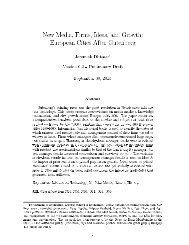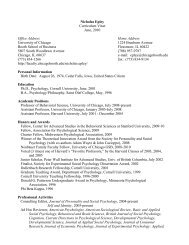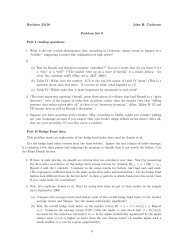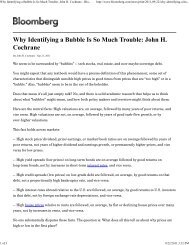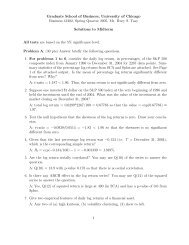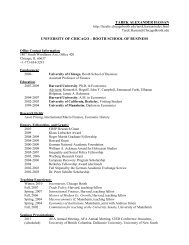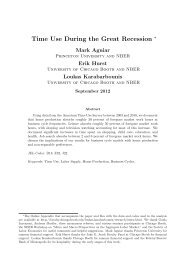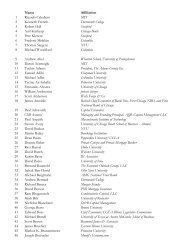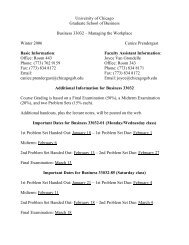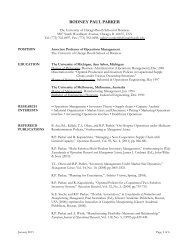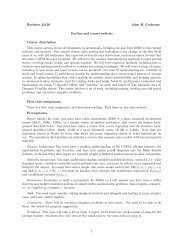by Milton Harris and Artur Raviv - Faculty
by Milton Harris and Artur Raviv - Faculty
by Milton Harris and Artur Raviv - Faculty
You also want an ePaper? Increase the reach of your titles
YUMPU automatically turns print PDFs into web optimized ePapers that Google loves.
<strong>and</strong><br />
H(Q)<br />
L(Q)<br />
A(Q), for Q Q B (r,p),<br />
B pr (Q), Q B (r,p) G. The rest of<br />
this case follows as in Case 1 above. Therefore H <strong>and</strong> L are given <strong>by</strong> (18) <strong>and</strong> (19), <strong>and</strong> the optimal<br />
design is the same as for Case 1 above <strong>and</strong> pictured in Figure 6.<br />
Case 5: J > Q B(r,p), J > G > Q B(p,r), <strong>and</strong> min{J,2r+r 2 s} Q K(p,r)<br />
Since J > Q B(r,p), G < J, so H(Q) = max{A(Q),B pr(Q)} for Q G. Also, using (8), K pr(G) =<br />
B pr(G) > A(G) = D(G), so Q K(p,r) > G. Since Q K(p,r) J <strong>and</strong> D(Q) is less steep than K rp(Q), D(Q)<br />
K xy(Q) for Q Q K(p,r). Finally, since Q K(p,r) 2r+r 2 s, Q 4p > Q K(p,r). Therefore,<br />
D:\Userdata\Research\Hierarchies\temp.wpd 42 February 22, 2000 (11:18AM)<br />
(22)<br />
(23)



